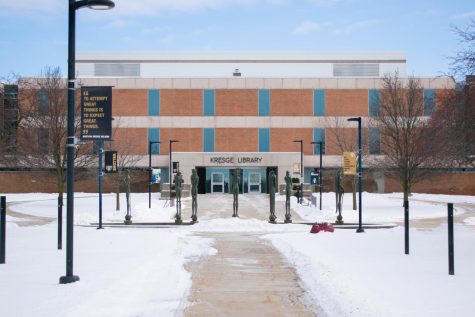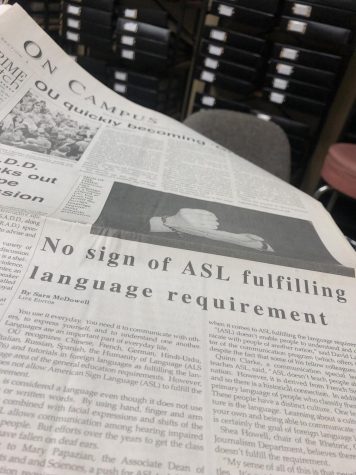Looking Back: 1968 state budget shocked university, caused financial struggle
In January 1968, Michigan’s Governor George Romney announced his proposed fiscal year budget, and everyone at Oakland University was shocked.
Under Romney’s proposed budget, OU was the only school in Michigan whose per capita appropriation went down — $65 per student at that. Per capita appropriation is decided by the number of dollars divided by the number of students. The average increase between schools like Michigan State, Michigan, Saginaw Valley, Eastern and Grand Valley was $76.
Salary and wage adjustments were equal to $305,000, the inflationary increase totaled to $38,000, physical plant costs of new Engineering Building was $135,000, increased cost of social security, retirement and fringes cost $60,000 and third semester faculty rang in at $49,000.
The total from all of that is a bizarre $587,000. This amount was more than the Governor’s recommended limit, so it didn’t accommodate the projected 784 new students the incoming fall semester.
The enrollment growth entailed many different costs — 44 new faculty members which totaled $440,000, support staff in academic areas $141,000, health center operating costs $73,000, Meadowbrook estate maintenance and security $105,000, instructional equipment $80,000, public safety program improvements $54,000, supplies and services for additional faculty, staff and students $101,000, library acquisitions and staff $517,000.
The total? $1,511,000.
Chancellor D.B. Varner commented, “The Governor’s budget caught us completely by surprise. If the legislature accepts it, we’ll have to revise our budget entirely.” In this case, revise meant substantial reductions in major programs.
It was obvious that OU suffered financially in 1968.
Fast forward to last year’s fiscal year budget, it is vastly different compared to 1968. Every year, the tuition and cost increases to compete with the ever-growing economy.
If Oakland were to be funded at the state average, its appropriation would be $41.5 million higher than it was in 2018, which would provide tremendous support for academic needs and student support services.
The university’s 2018 base appropriation per fiscal year was the lowest in the state at $2,872, as compared to the average $5,197. State funding as a percentage of the university’s 2018 General Fund revenue is 17%.
It’s the lowest state appropriation funding per student, $2,325 below the average; fourth lowest total revenue per undergraduate student, it’s the fourth lowest general fund expenditures per student, $4,385 below the average; second highest number of students per faculty; seventh lowest staff per 1,000 students; lowest general fund building square footage per student; lowest utility cost per square footage.
Tuition is the primary source (82%) of the budget. The average tuition rate for a full-time resident freshman is $12,892.50, which is an increased 3.8% — $15.75 per credit hour.
The full-time resident graduate tuition rate is $17,712, 4.5% — $31.75 per credit hour. Tuition rates for Oakland’s Professional Schools have been increased at a rate of 3.9%.
The 2019 budget is based on the executive budget proposal, with a state appropriation of $52,816,100, including $1,580,200 in performance funding, which is a 3.1% increase from the previous year.







